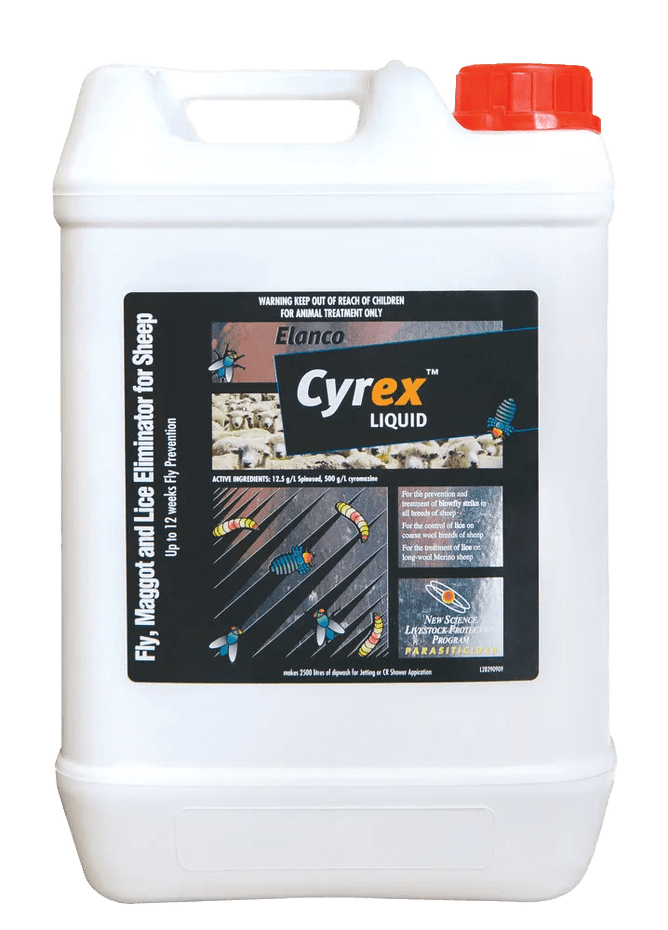Last year was a tough season for managing fly. As the soil has warmed up, flystrike is unfortunately back on our radar.
Warm and wet weather provides the perfect conditions for blowflies - and we've had a lot of rain!
Early protection not only protects your flock, but also gives you peace of mind over the holiday season. Managing your risk will help your lambs thrive, and your ewes recover from a tough spring.
Looking at the next couple of months, it is important to closely monitor your stock so you can take action before you have a problem. When deciding on the best prevention treatment for your farm, ensure you choose products based on wool length and when you are planning to shear.
If you aren’t planning to shear until the New Year, you may still need prevention to cover your flock until then, so chat to your KeyVet about the best plan of action. Shearing in 4-6 weeks isn't a reason not to protect your stock – it just means you might do it differently!
What is flystrike?
Flystrike typically happens between November and March in warm and humid weather. Blowflies are attracted to damp or daggy wool on sheep and lay eggs onto the fleece. These eggs then hatch into maggots, which feed on flesh and release toxins into the tissue.
The first signs you may see of flystrike in stock include tail twitching, stomping and itching or rubbing at the affected area. As it progresses, they will appear depressed, seek shade and stop eating.
The financial impact
Flystrike can lead to significant animal welfare concerns and economic impacts.
Small areas of flystrike (less than 15cm) can cause significant weight loss which can easily take over a month to recover from.
Scanning data also shows that around 80% of flystruck ewes are empty when it comes to scanning.
What can we do about it?
When we talk about prevention of flystrike, we have two toolboxes. The first toolbox contains our ‘non-chemical’, or farm management, tools.
Toolbox 1:
Husbandry
Effective internal parasite control to minimise dags;
Shearing and crutching;
Tailing to an appropriate length.
Dead stock
Dead stock provide an ideal environment for maggot growth and food source for adult flies;
Bury, burn or place dead stock in an offal pit when discovered.
Know your farm
Scrub-lined gullies, thistles and shelterbelts attract flies;
Move stock to windy and exposed pastures which are unfavourable to flies.
Genetic improvement
Cull affected sheep as they are more likely to die in the following year and, if they survive, will weigh less and rear fewer lambs;
Select for traits such as bare breeches.
Record keeping
Record stock treatments and weather conditions. Rain after treatment can reduce the length of protection you will get from the product used.
Toolbox 2
Our second toolbox contains our ‘chemical management tools’ or dips.
Whether you are applying product by Automatic Jetting Race (AJR), spray-on, or shower etc, we should still check stock for flystrike within the on-label period of protection.
A lesser period of efficacy occurs when
product is applied incorrectly,
there is excessive fleece soiling,
there are wool infections, or
heavy rain following application.
There are a number of products out there, including the CLiK range, Cyroshield Liquid and Cyrex. Give the clinic a call, or have a chat with your KeyVet, to figure out which product will suit you best.
How do we treat a case of flystrike?
Once identified, cases of flystrike should be treated quickly.
Clip back longer wool around the site (do not shear down to the skin as this increases the risk of sunburn).
Soak the struck area with an approved dressing (needs to contain a ‘knockdown ingredient’).
Provide the affected animals with food, shelter and water, as infection causes a fever.
Consider antibiotic and anti-inflammatory injections.
If affected animals survive, cull them at the next opportunity.
We have two main products for treatment on our shelves here at the clinic: Cyrex and Maggo.
Maggo contains a neurotoxin which paralyses the larvae, causing them to fall off quite spectacularly. Despite the satisfaction of watching this, we need to remember that the neurotoxin is not specific for larvae - it can cause paralysis or twitching in sheep, and is also toxic to humans.
Cyrex is a much safer option for us to handle. It works by stopping the development of larvae which eat at the sheep’s flesh. In addition to being used as a spot treatment for affected animals, it can also be used as a shower or jetting solution for 3-8 weeks of protection! Cyrex must be made up on the day of use.
To discuss your plans for prevention and treatment, get in touch with your KeyVet, or your local clinic.
Source: Beef and Lamb NZ



